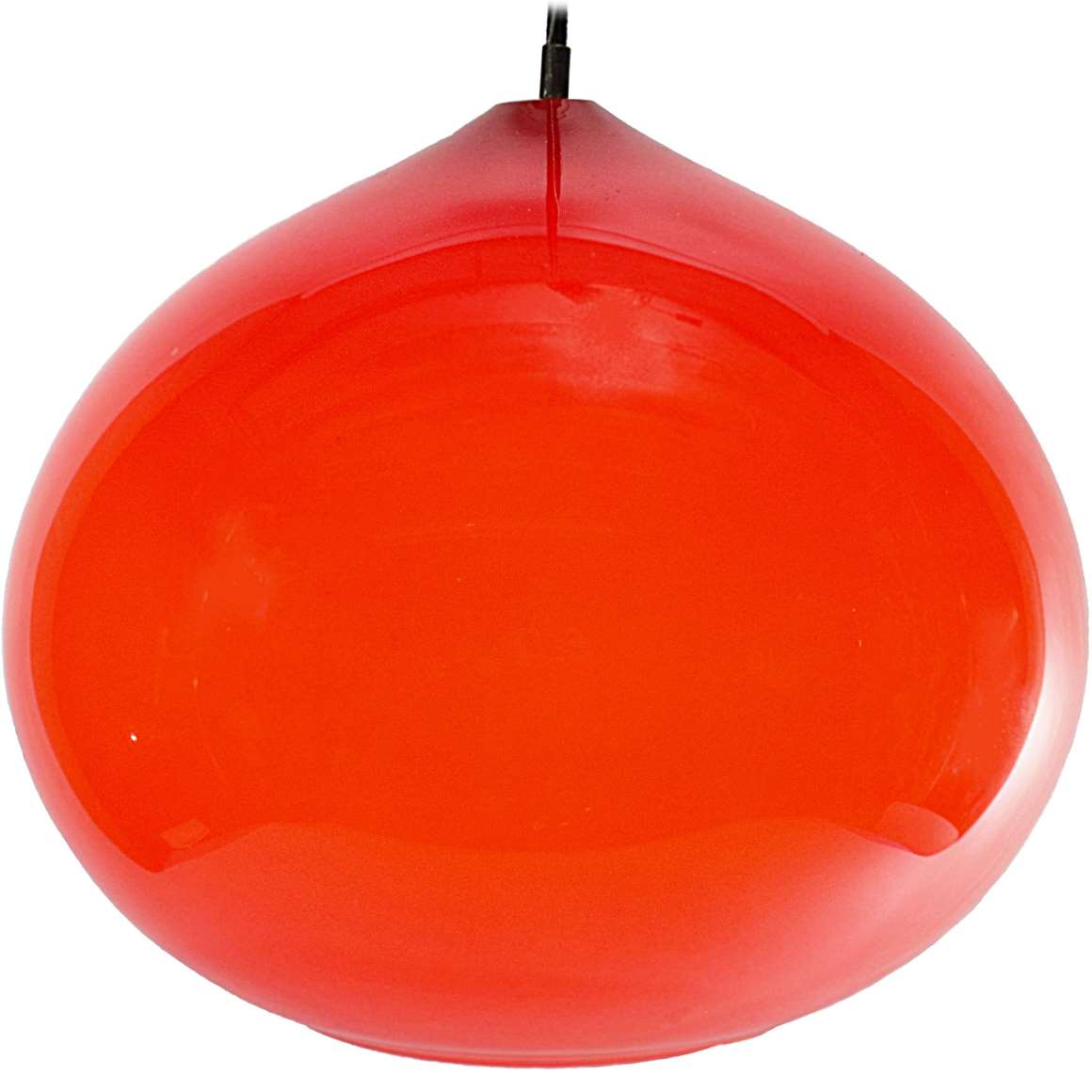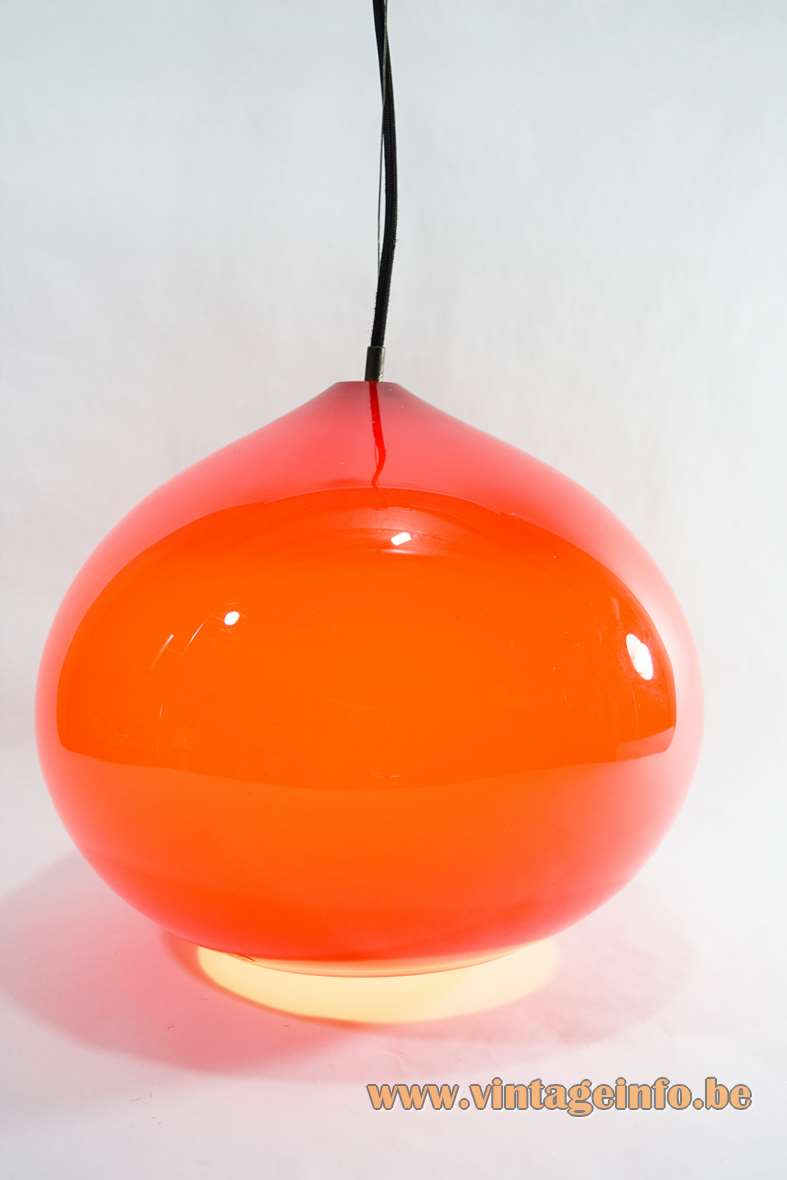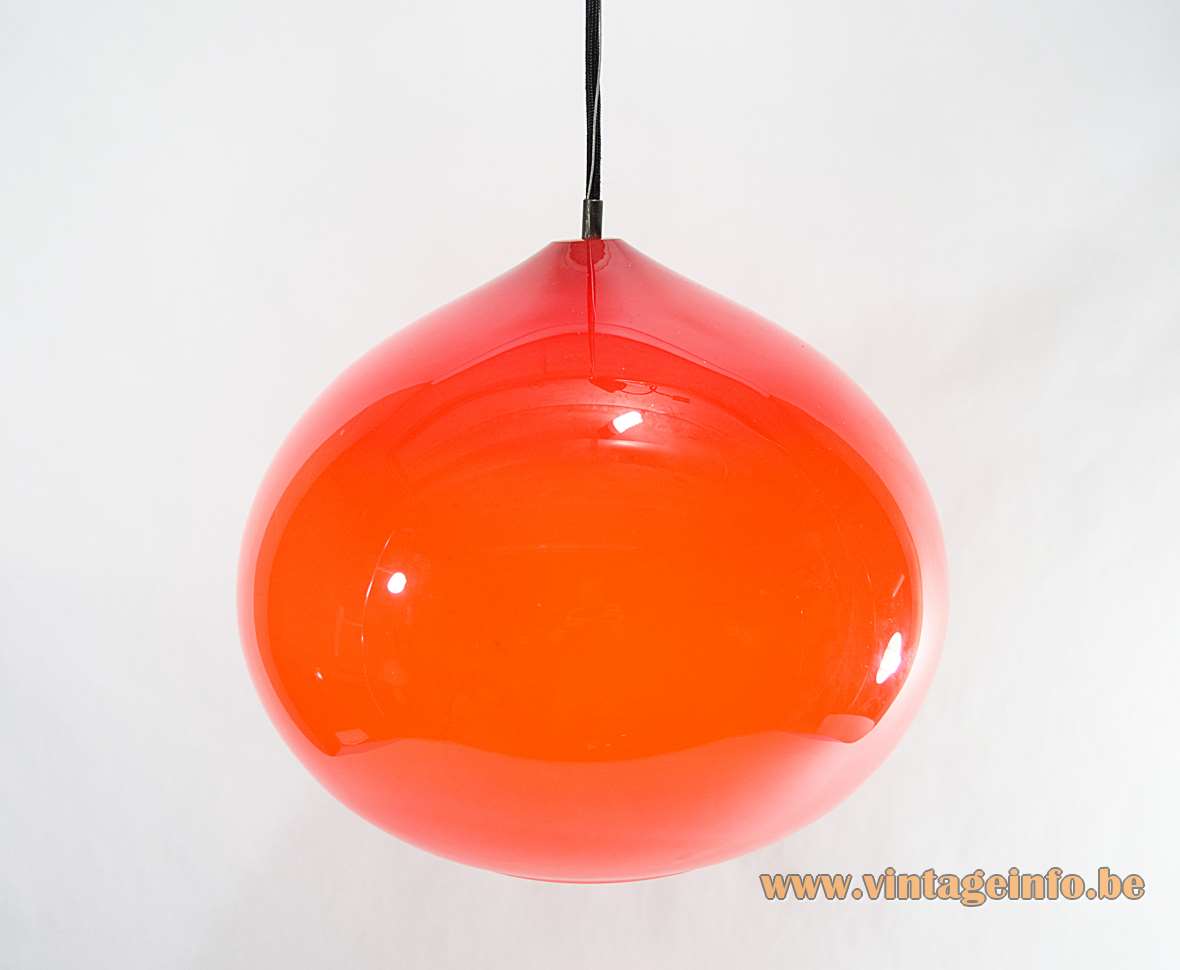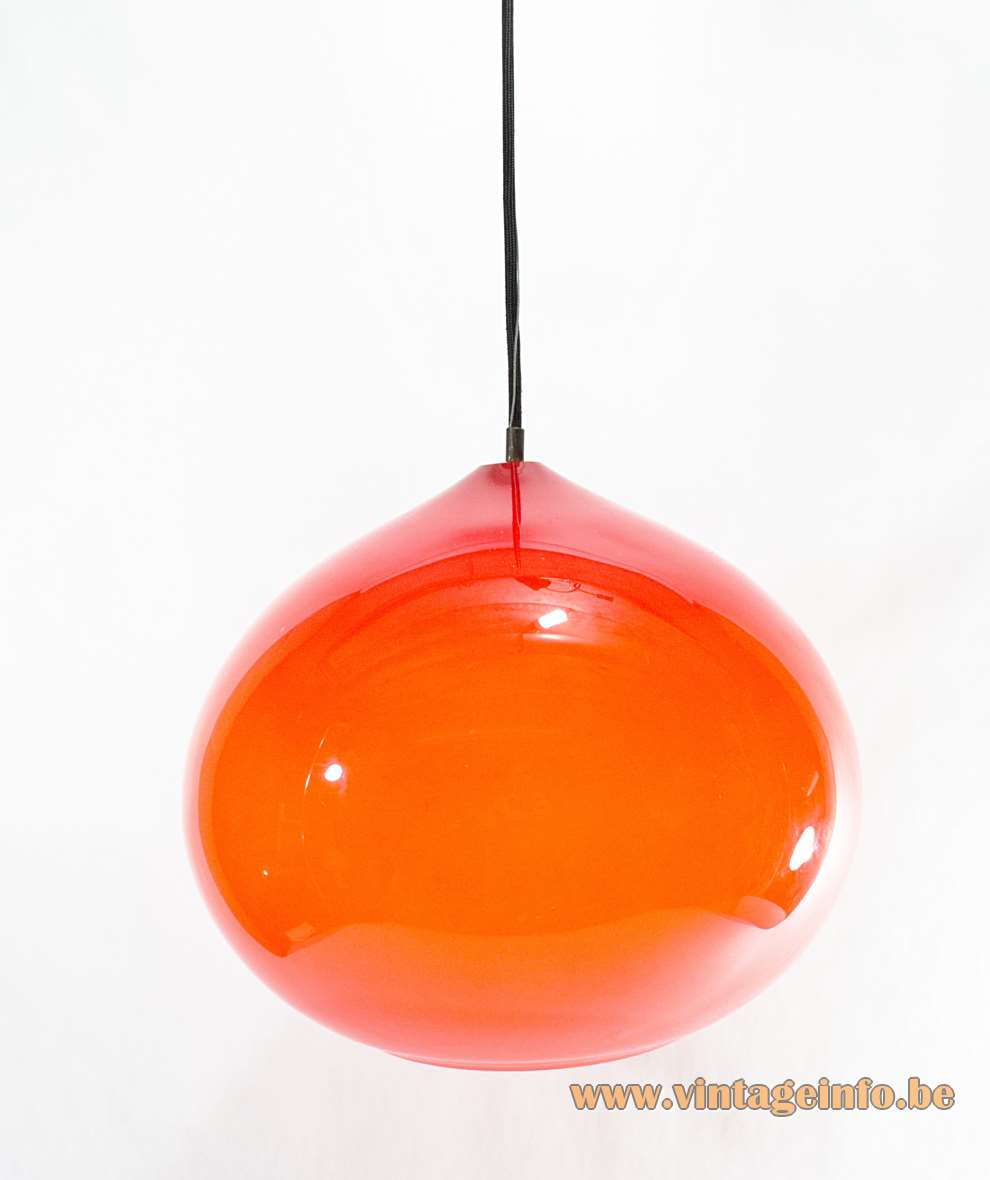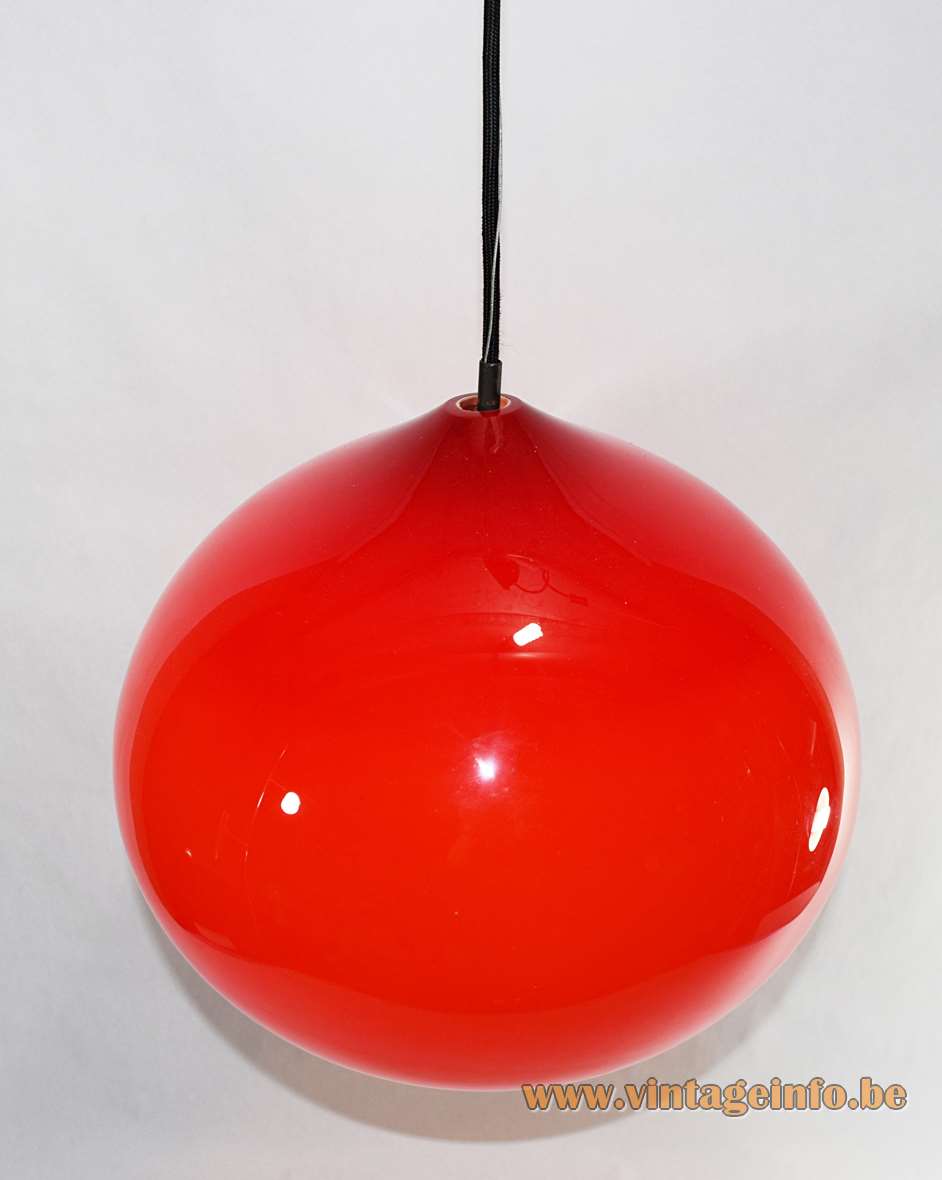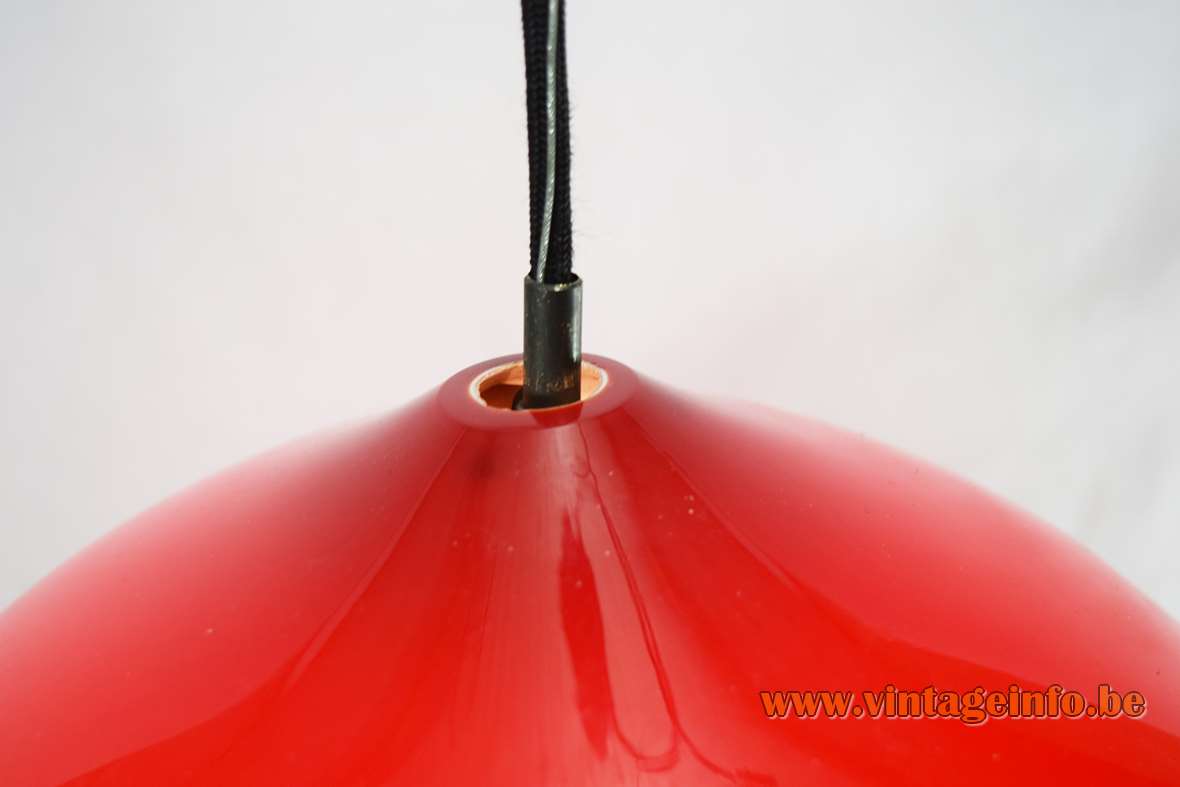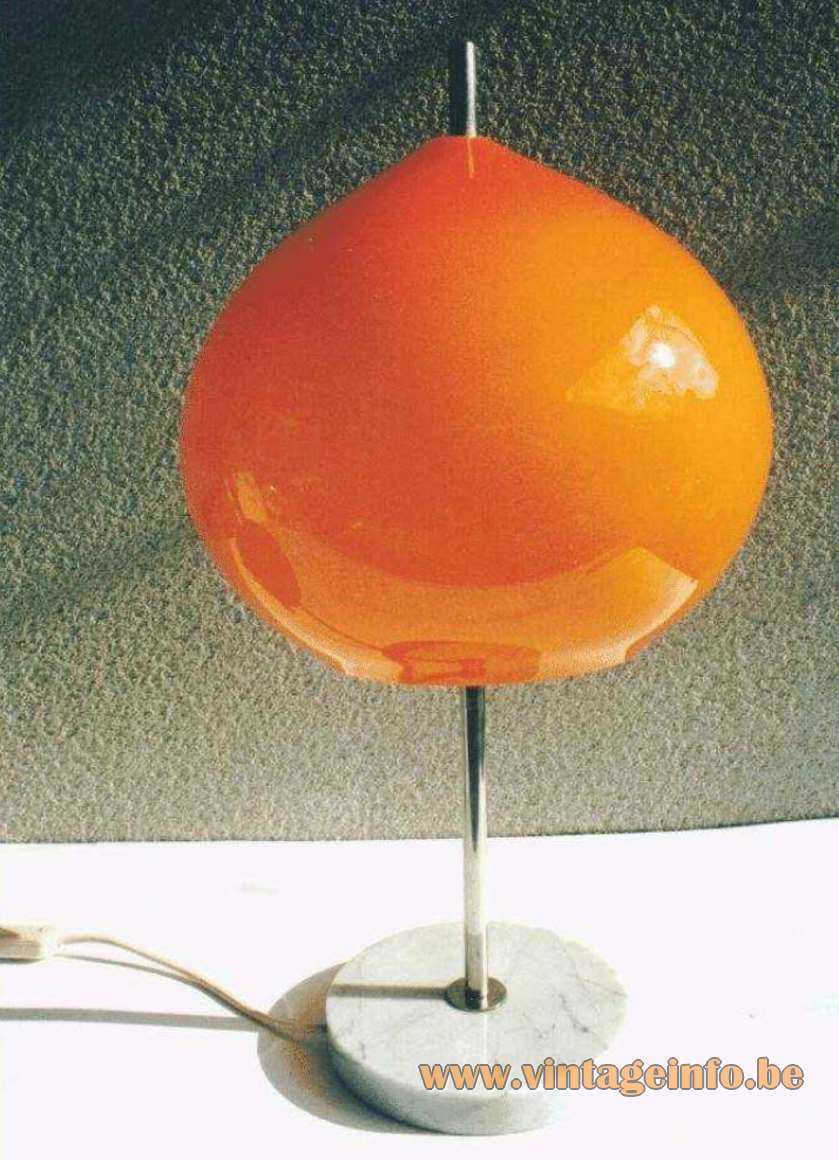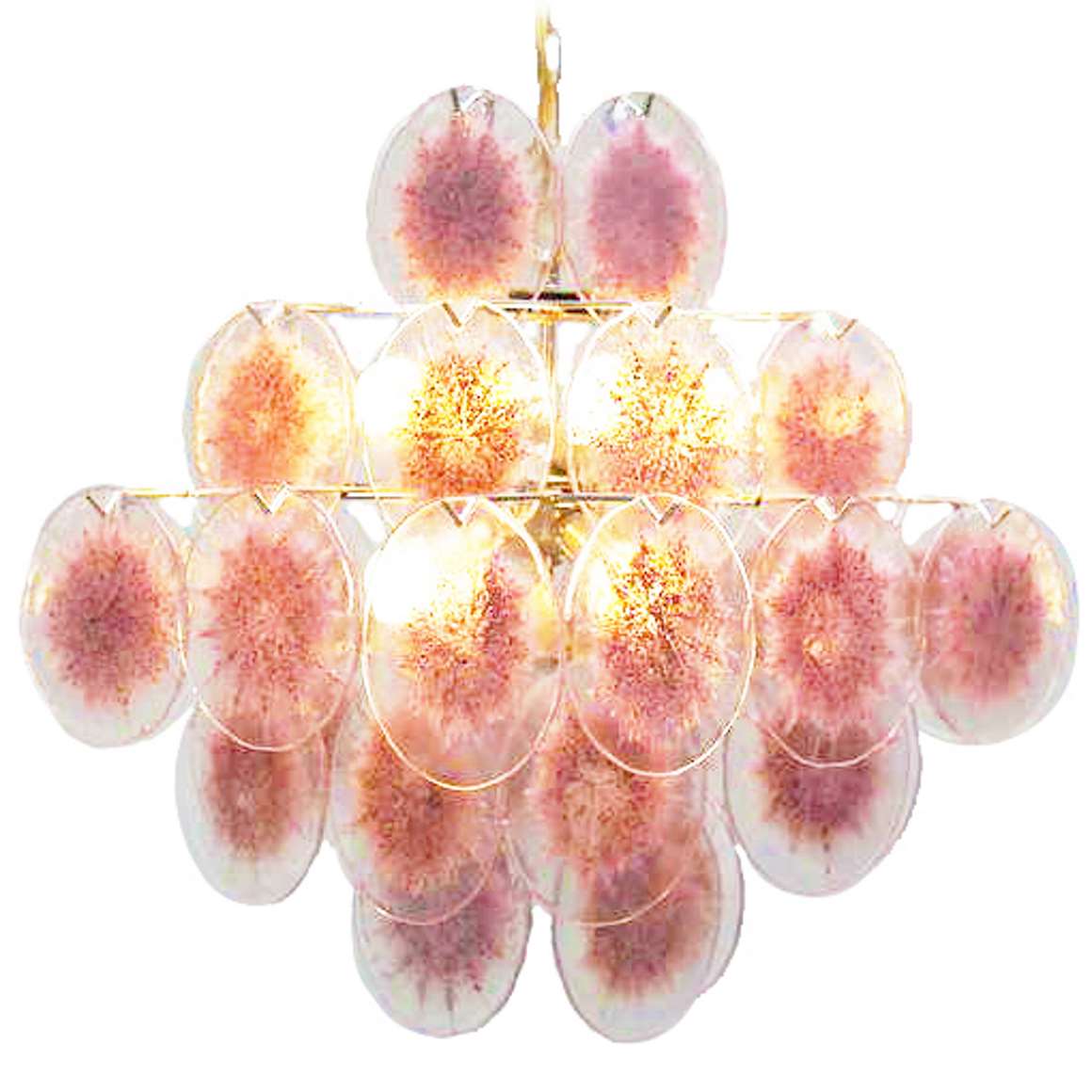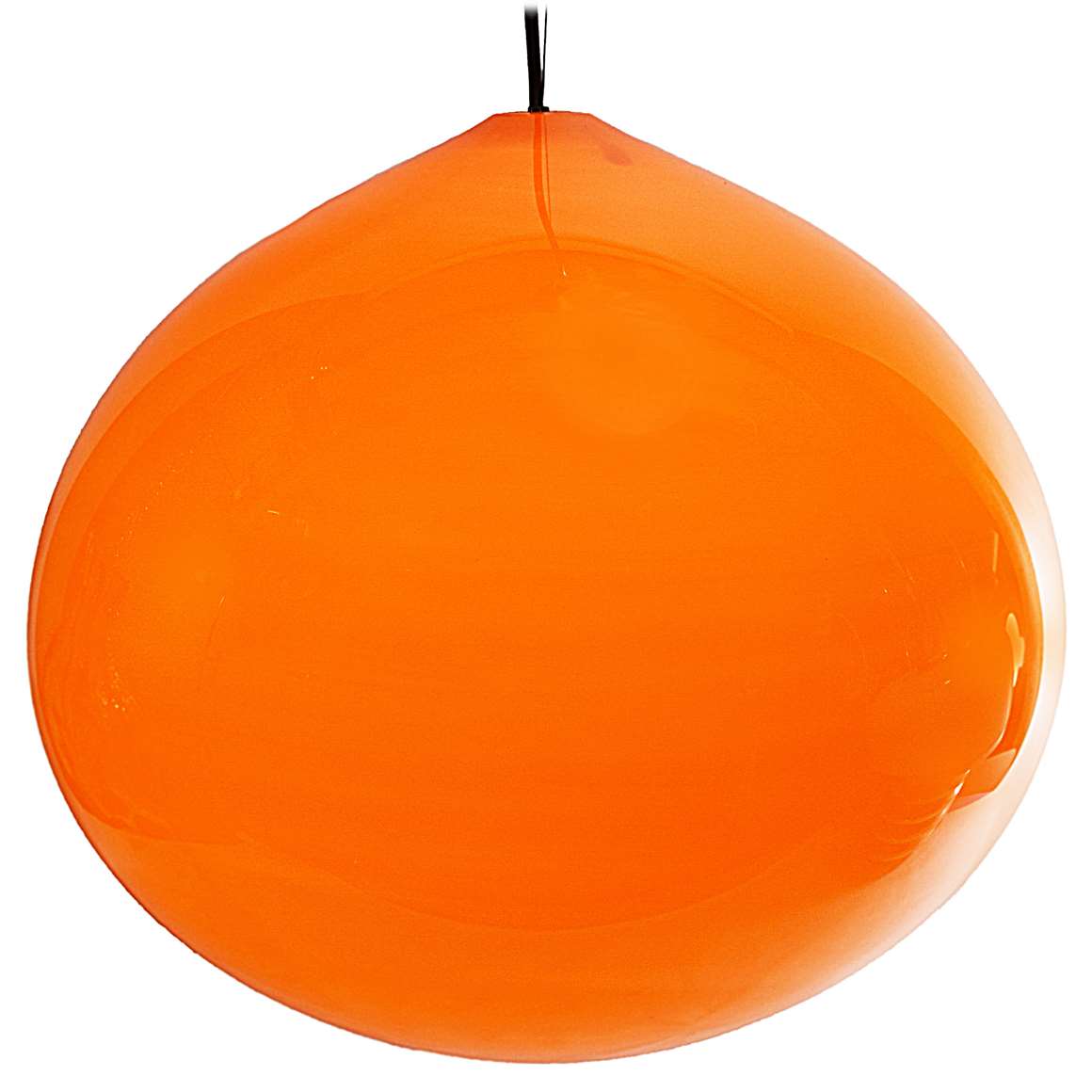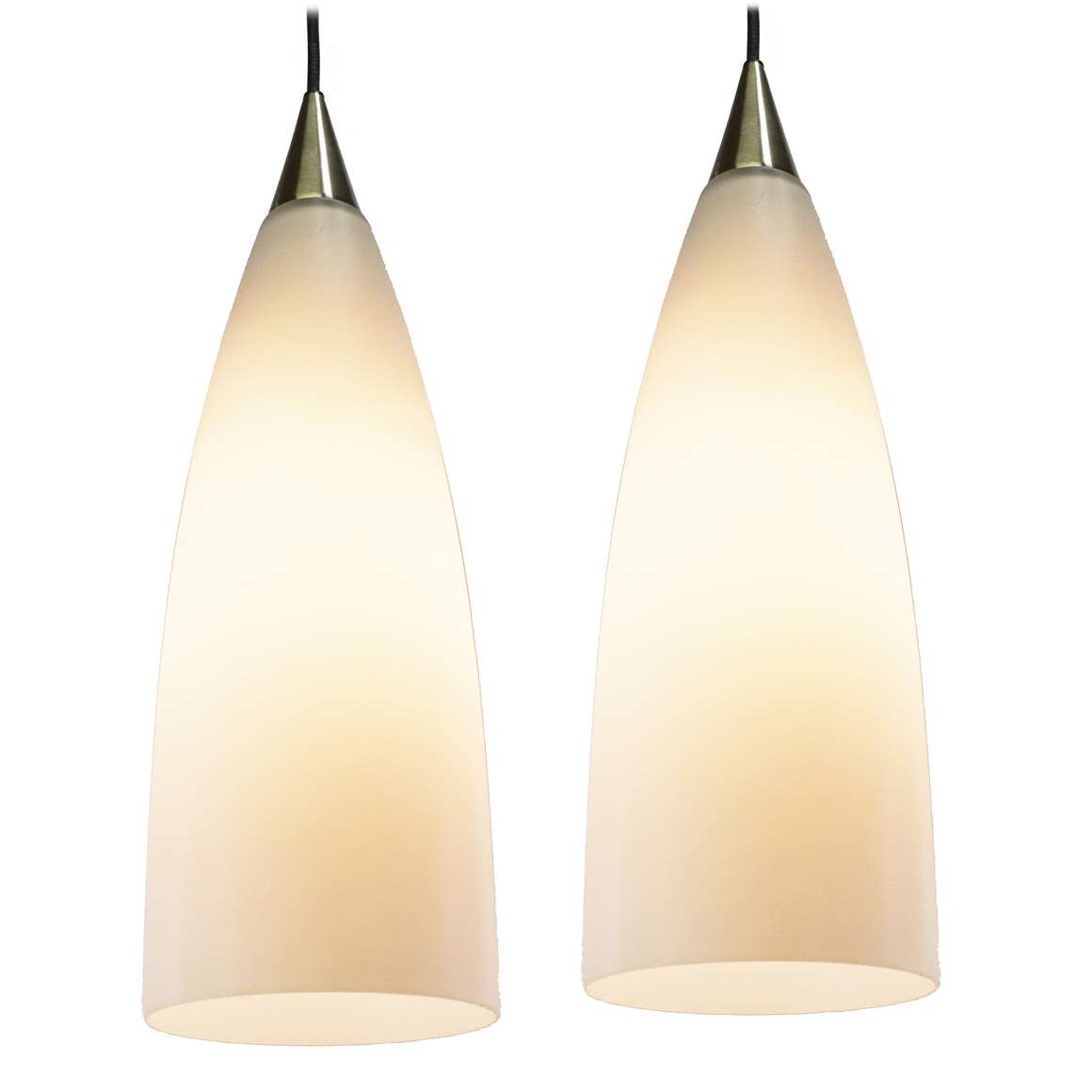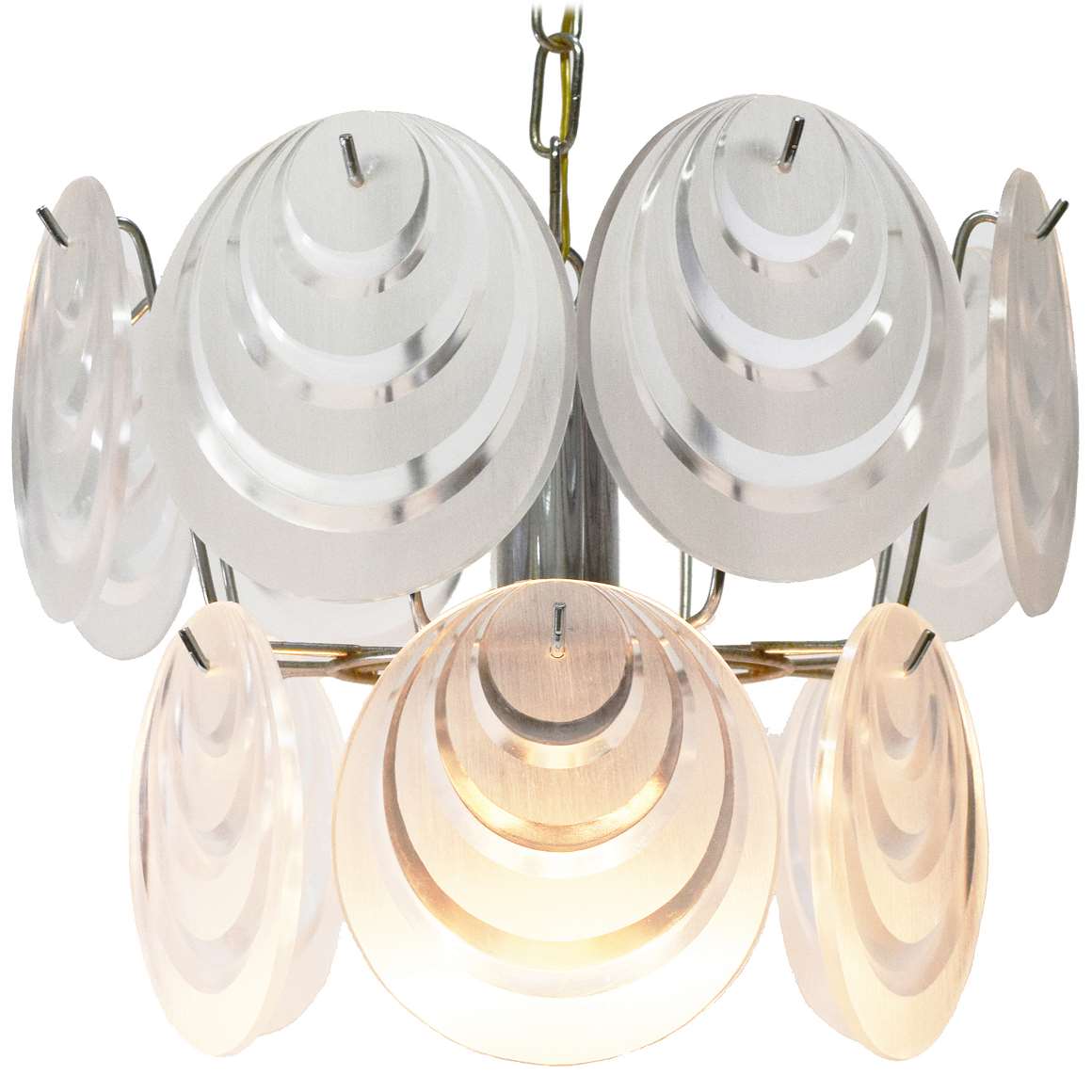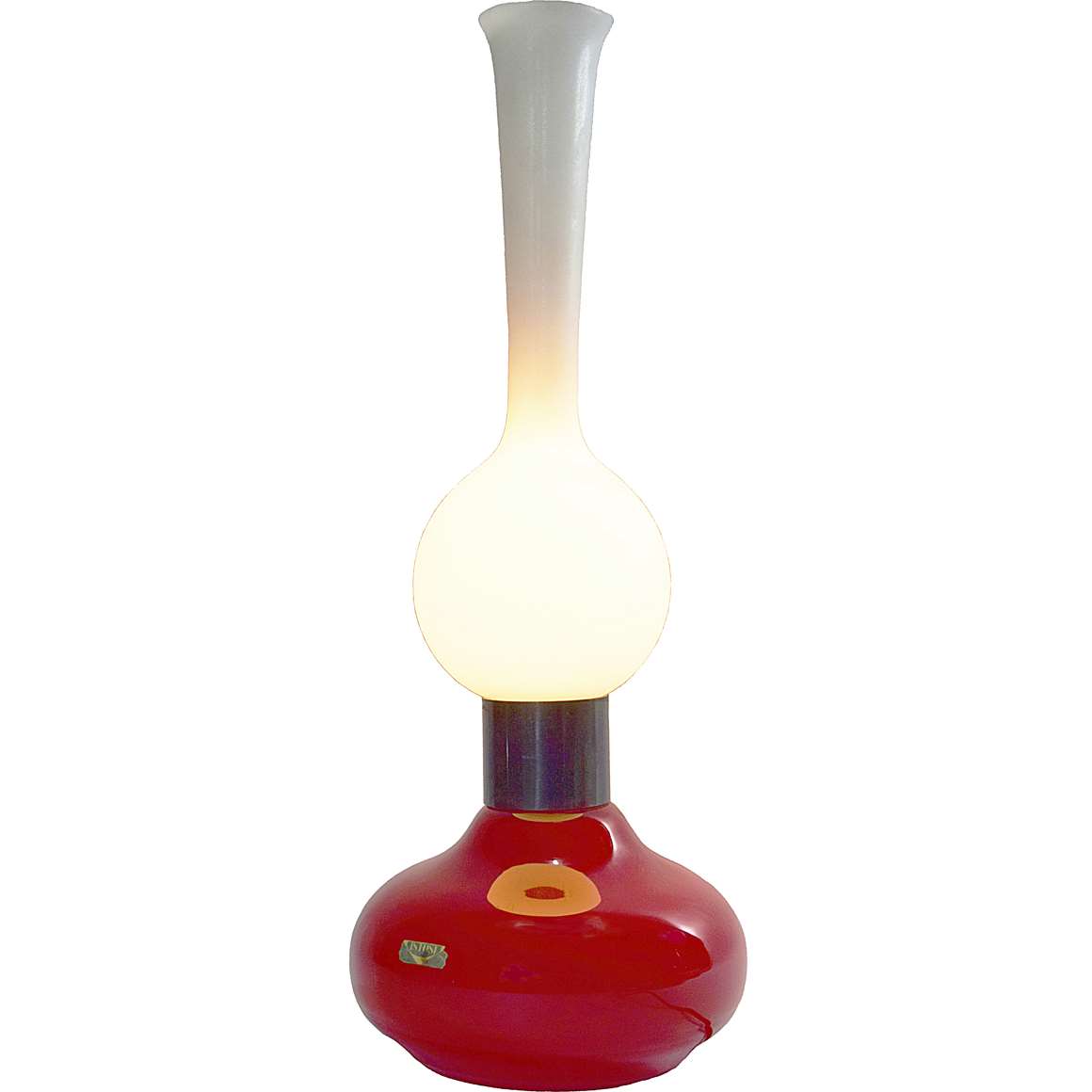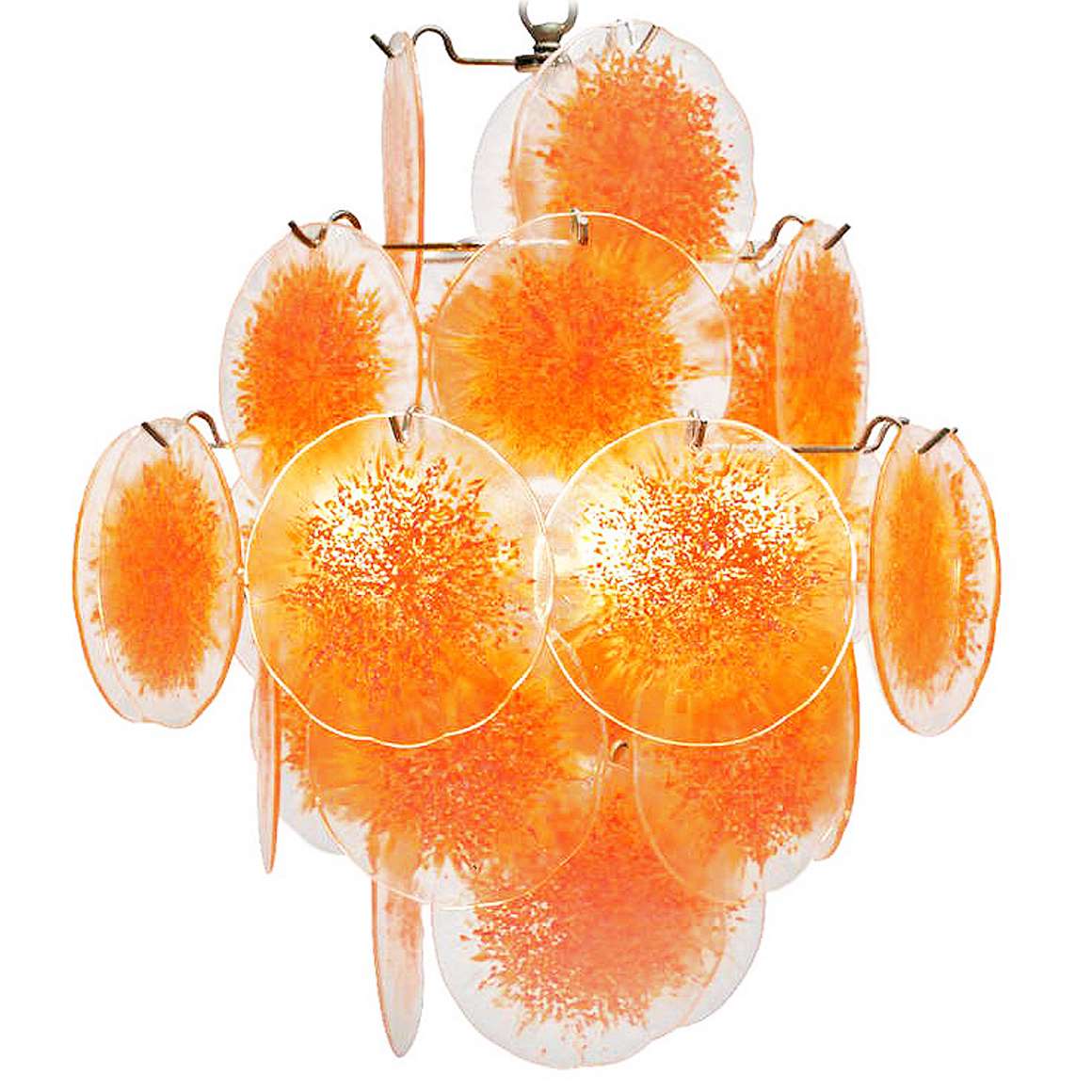Vistosi Onion Table Lamp
Links (external links open in a new window)
Vistosi history – Vistosi website
Luciano Vistosi in the Murano glass Museum
Biography of Luciano Vistosi on the Murano Glass Museum website
Inexhibit: The sculpture of Vistosi at the Murano Glass Museum
Murano glass blowing – Wikipedia
Vintageinfo
Orange version of this Onion lamp
Vistosi Onion Pendant Lamp
Materials: Dark red hand blown crystal Murano glass globe lampshade, made in an onion or tulip bulb shape. The inside is white (incamiciato). Black plastic canopy. Bakelite E27 socket with metal parts and steel wire.
Cord Length: 100 cm / 39.37’’
Height: 34 cm / 13.38”
Width: ∅ 32 cm / 12.59”
Electricity: 1 bulb E27, 1 x 75 watt maximum, 110/220 volt.
Any type of light bulb can be used. But preferable a white/opaque or frosted one. Bright light bulbs cause streaks on the glass and therefore also on the walls.
Period: 1950s, 1960s – Mid-Century Modern.
Designer: Alessandro Pianon (1931 – 1984).
Manufacturer: Vistosi, Murano, Italy.
Other versions: This Vistosi onion pendant lamp also exists as a table lamp and a floor lamp. It was made in several sizes and colours. This pendant lamp is model L 51. +- 35 cm / 13.77”. L 71 is +- 45 cm / 17.71” The Italians call it Cipolla = Onion. But these lamps only have numbers as far as I know.
Incamiciato: overlay lattimo glass (= milky looking glass) with a layer of transparent coloured glass.
Alessandro Pianon
Alessandro Pianon was born in Venice, Italy in 1931. He studied architecture at the Venice University. In 1956 he worked at Vistosi, designing the company’s logo. In 1962 he opened his own design studio. Pianon died in Venice in 1984.
Alessandro Pianon designed this pendant lamp in 1956, it was made for many years. It was produced for several years. It is characteristic of Alessandro’s design vocabulary: simple, geometric shapes and monochrome colours.
This lamp is an early production. The 1950s-1960s labels of Vistosi and Murano are present.
Vistosi
Early Origins
The story of Vistosi begins in Murano with the Gazzabin family, who acquired the Al Bastian furnace in 1640. Soon after, the family name “Vistosi” emerged, and by 1791Gio-Batta Vistosi had become Gastaldo dell’Arte, head of the Murano glassmakers’ guild.
A New Beginning after the War
In 1945Guglielmo Vistosi, heir of the Gazzabin family, opened a new furnace in Murano right after World War II, focusing on lighting. Following his premature death, his sons Gino and Luciano, together with their uncle Oreste, laid the foundation of the modern Vistosi company.
The Design Revolution of the 1950s–1980s
The arrival of Venetian architect Alessandro Pianon in 1956 marked a turning point. With Gino and Luciano, he transformed the company into a pioneer of innovation and modern design.
From the late 1950s to the 1980s, Vistosi collaborated with some of the most influential names in design, such as Angelo Mangiarotti, Gae Aulenti, Ettore Sottsass Jr., Massimo Vignelli, Adalberto Dal Lago, Stefania Giannotti, Elleonore Peduzzi Riva, Vico Magistretti, Michele De Lucchi and many others. This golden era produced some of the most iconic Vistosi lighting, now highly sought after by collectors.
The Moretti Era
In 1989 the brand was acquired by Murano businessman Giancarlo Moretti, who had long experience in the glass industry. His son Matteo Moretti later relaunched the company after a short closure in the 1990s, expanding it with the acquisition of brands such as Alox, G2 and Triade.
The last of the founding generation, Luciano Vistosi (1930 – 2010), devoted his later life to research and glass sculpture, leaving a lasting artistic legacy.
Innovation and Recognition since the 2000s
From the early 2000s, Vistosi entered a new phase of experimentation and recognition. Collections such as Rina, Cheope09 and Minigiogali updated traditional techniques for contemporary forms. Later came Giogali 3D, a new interpretation of the famous chandelier, and Diadema, created with a unique patented rod process. Award-winning designs like Futura, Nodo, Trepai, Jube, Sata, Stone and Armonia confirmed Vistosi ’s relevance in international design.
In 2019 the company celebrated the 50th anniversary of Giogali, and in the following years it was recognised among the 100 Eccellenze Italiane, partnered with the Venice Glass Week, and launched a Virtual Museum, e-commerce platform and LED collections.
Designers of the Contemporary Period
Under the Moretti family, Vistosi worked with a wide range of contemporary designers, including Chiaramonte & Marin, Mauro Olivieri, Barbara Maggiolo, Paolo Crepax, Monica Agnolazza, Silvio Zanon, Giovanni Barbato, Matthias Hickl, Roberto Maci, Alberto Nason (son of Carlo), Romani Saccani Architetti Associati, Gregorio Spini, Emmanuel Babled, Oriano Favaretto, Marco Acerbis, Castaglia Associati, Pio e Tito Toso, Renato Toso, and Noti Massari & Associates.
A Defining Design
A remarkable fact in Vistosi ’s history concerns the famous Giogali chandelier series. Although countless catalogues, books and online sources credit the design to Angelo Mangiarotti, it was in fact created by Gino Vistosi himself – according to Gino Vistosi’s daughter.
Vistosi 1960s glass collection
Green Vase: Luciano Vistosi, Orange Pulcini bird: Alessandro Pianon.
The 2 smoked glass vases on the right are always attributed to Fulvio Bianconi, but they are not. They are very similar with his design, but they were made by Vistosi, as confirmed by the official Fulvio Bianconi website. The original designed Ih, che bei vases are blue. You can find them on Bianconi’s website.
